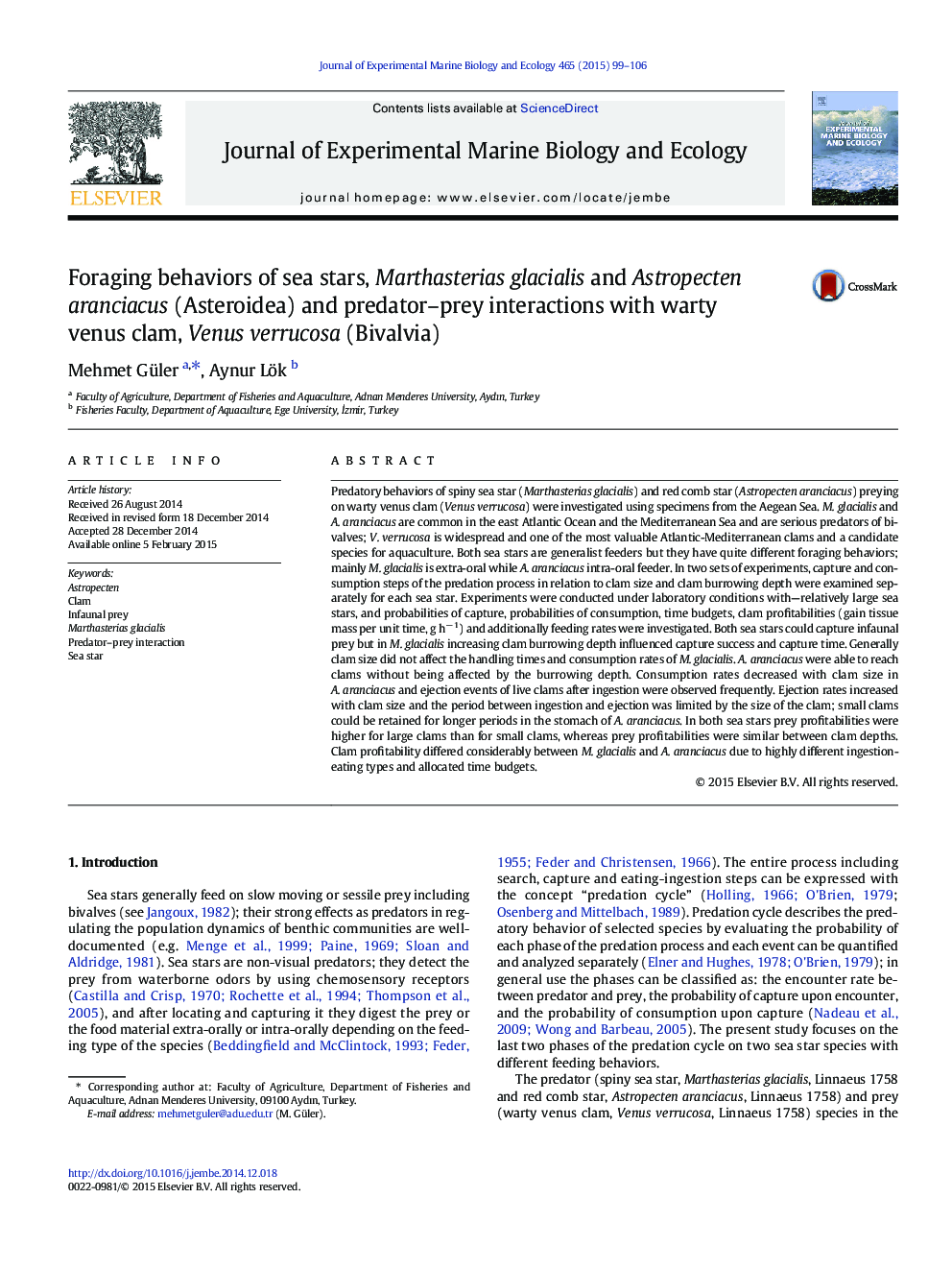| کد مقاله | کد نشریه | سال انتشار | مقاله انگلیسی | نسخه تمام متن |
|---|---|---|---|---|
| 4395516 | 1618410 | 2015 | 8 صفحه PDF | دانلود رایگان |

• Both sea stars could capture infaunal prey.
• In M. glacialis increasing burial depth influenced capture success and capture time.
• A. aranciacus could reach clams without being affected by the experimental depths.
• Clam size did not affect the handling times and consumption rates of M. glacialis.
• In A. aranciacus the period between ingestion and ejection is limited by prey size.
Predatory behaviors of spiny sea star (Marthasterias glacialis) and red comb star (Astropecten aranciacus) preying on warty venus clam (Venus verrucosa) were investigated using specimens from the Aegean Sea. M. glacialis and A. aranciacus are common in the east Atlantic Ocean and the Mediterranean Sea and are serious predators of bivalves; V. verrucosa is widespread and one of the most valuable Atlantic-Mediterranean clams and a candidate species for aquaculture. Both sea stars are generalist feeders but they have quite different foraging behaviors; mainly M. glacialis is extra-oral while A. aranciacus intra-oral feeder. In two sets of experiments, capture and consumption steps of the predation process in relation to clam size and clam burrowing depth were examined separately for each sea star. Experiments were conducted under laboratory conditions with—relatively large sea stars, and probabilities of capture, probabilities of consumption, time budgets, clam profitabilities (gain tissue mass per unit time, g h− 1) and additionally feeding rates were investigated. Both sea stars could capture infaunal prey but in M. glacialis increasing clam burrowing depth influenced capture success and capture time. Generally clam size did not affect the handling times and consumption rates of M. glacialis. A. aranciacus were able to reach clams without being affected by the burrowing depth. Consumption rates decreased with clam size in A. aranciacus and ejection events of live clams after ingestion were observed frequently. Ejection rates increased with clam size and the period between ingestion and ejection was limited by the size of the clam; small clams could be retained for longer periods in the stomach of A. aranciacus. In both sea stars prey profitabilities were higher for large clams than for small clams, whereas prey profitabilities were similar between clam depths. Clam profitability differed considerably between M. glacialis and A. aranciacus due to highly different ingestion-eating types and allocated time budgets.
Journal: Journal of Experimental Marine Biology and Ecology - Volume 465, April 2015, Pages 99–106